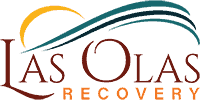
Fentanyl and Tranq Dope: Understanding These Dual Addictions
Are you or somebody you love using fentanyl or fentanyl with xylazine, aka tranq dope? The combination is a powerful addiction. Fentanyl is a powerful synthetic opioid used in medical settings to treat severe pain, often after surgery or for chronic pain in people who are tolerant to other opioids. It is 50 to 100 times more potent than morphine, making it extremely dangerous if misused. Alone, it is a powerfully addictive drug that has already caused hundreds of thousands of overdoses in America.
Combined with xylazine, fentanyl becomes even more dangerous for drug users. Tranq dope is a street name for xylazine, but the two are often sold in one pill. Xylazine, a veterinary tranquilizer not approved for human use, is a popular drug when mixed with fentanyl. Tranq dope can be found on the streets of Los Angeles, the Tenderloin District, and Philadelphia on any given day. The drug combination is precarious because xylazine can cause severe breathing problems, dangerous skin ulcerations, and other health issues.
Dangers of Tranq Dope
- Respiratory Issues: Xylazine can slow down breathing, which is already a risk with fentanyl.
- Severe Sedation: Xylazine increases sedation, leading to an even higher risk of overdose.
- Skin Ulcers: Prolonged use of xylazine can cause severe skin ulcers and infections.
- Difficult to Detect: Xylazine is not always detected in standard drug tests, making it harder for medical professionals to treat overdoses effectively.
- Tranq Dope Addiction: Addiction and withdrawal can present a range of severe and alarming symptoms, with some users requiring limb amputation with continued use.
Symptoms of Tranq Dope Addiction
Tranq dope addiction has many effects that aren’t all understood yet. People addicted to tranq dope, when intoxicated, may experience extreme sedation, making it difficult for them to stay awake or function normally.
Respiratory issues among tranq dope users are common, as xylazine can dangerously slow down breathing, increasing the risk of fatal overdose. Users often develop severe skin ulcers and infections due to prolonged use of xylazine, leading to painful and persistent wounds.
Tranq dope addiction can cause unsettling muscle spasms, tremors, and seizures, complicating the physical toll on the body. Intense cravings for the drug, coupled with severe anxiety and agitation during withdrawal, make breaking free from addiction particularly challenging. This is why a treatment center with detox is the best place to start your recovery.
Symptoms of Withdrawal
Fentanyl Withdrawal
Withdrawal from fentanyl can be challenging. Symptoms often include:
- Intense cravings for the drug
- Nausea and vomiting
- Diarrhea
- Muscle and bone pain
- Insomnia
- Cold flashes with goosebumps
- Uncontrollable leg movements
- Severe anxiety and agitation
These symptoms can begin within hours of the last dose and may last for weeks.
Tranq Dope Withdrawal
Withdrawal symptoms from tranq dope can be even more complicated due to the presence of xylazine. Symptoms may include:
- Severe anxiety and agitation
- Profound sedation and lethargy
- Slow heart rate and breathing
- Tremors and muscle spasms
- Intense cravings
- Seizures
- Severe sweating
These symptoms can overlap with fentanyl withdrawal symptoms. Most clinicians will grade a client’s symptoms on a scale to decide on treatment. Detox will have medications on hand to help make clients comfortable. Staff will constantly monitor for any additional needs while they detox.
Understanding Polysubstance Addiction
Polysubstance addiction means being addicted to more than one drug at the same time. For example, someone might be addicted to both fentanyl and xylazine (tranq dope). Dual addictions can make treatment more complicated or dangerous because some withdrawal symptoms can overlap and intensify.
Recovering from Addiction
Reaching out for help is the first step in recovery. For people who are addicted to a drug like fentanyl or tranq dope, detox is usually the second step.
Detox is the first part of the recovery process that describes when the body clears itself of drugs. Detoxing from fentanyl and other substances should be done under clinical supervision because of the severe withdrawal symptoms and risks. Doctors may prescribe medications that may be used to help manage withdrawal symptoms and keep the person safe and comfortable.
Finding Your Path to Recovery
Holistic inpatient drug treatment offers a comprehensive approach to overcoming addiction by addressing the physical, emotional, and spiritual aspects of recovery. These programs combine traditional medical detoxification and therapy with alternative practices such as yoga and nutrition counseling.
The goal is to treat the clients as a person, not just the addiction, fostering a balanced and healthy lifestyle. In a supportive and structured environment, patients receive 24/7 care and personalized treatment plans tailored to their needs.
This integrated approach helps individuals develop coping strategies, rebuild their lives, and find their path to long-term recovery. By nurturing mind, body, and spirit, holistic inpatient treatment empowers people with substance use disorder to break free from the cycle of addiction and find their path to recovery.
Long-term Recovery
Recovery is a lifelong process. Long-term strategies for staying the course of recovery include:
-
- Continued Therapy: Ongoing therapy can help prevent relapse.
- Healthy Lifestyle: Regular exercise, good nutrition, and hobbies can improve overall well-being.
- Building a Support System: Surrounding oneself with supportive family and friends is crucial.
- Join a 12-Step Program: Many people in recovery stay sober long-term by working the steps, seeking help from a sponsor, and speaking up in meetings.
Getting Help for Substance Use Disorders
Addiction to fentanyl and other substances like tranq dope is a serious and complicated disorder.
In the serene beauty of Baja California Sur, Las Olas offers a safe and inspiring environment to begin your recovery journey. Our wonderful treatment center provides a holistic approach to healing. We’re here to help you address the physical, emotional, and spiritual aspects of addiction.
Let us help you detox and begin rebuilding your life. Contact us at (949) 279-1376 or Mexico (612) 153-5726 to learn more about our programs and amenities.
